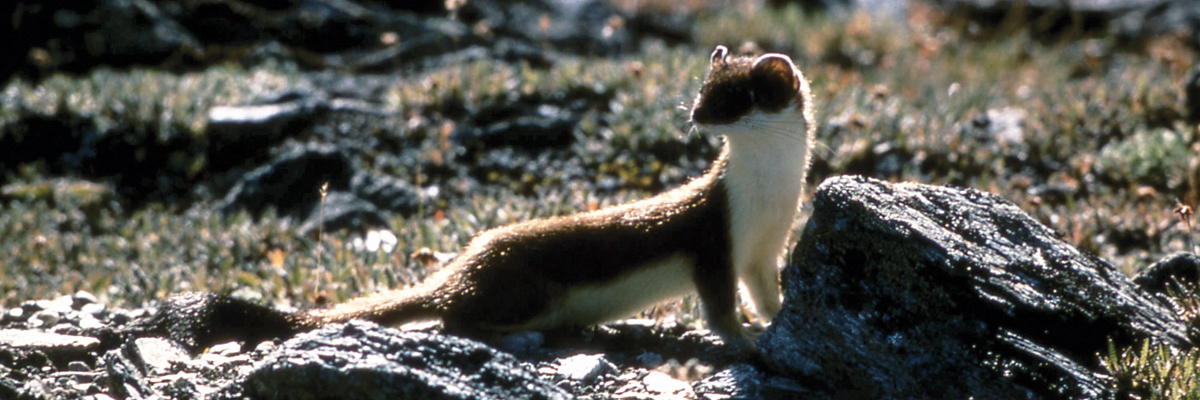
Long-tailed weasels are known to take poultry from poultry farms. Long-tailed weasels are good at catching rats and mice, so farmers do not mind having weasels around their farms because they kill these pests. The fur of long-tailed weasels were available in the fur trade but were not a popular commodity. Males become sexually mature at 15–18 months. The females are able to breed at 3–4 months of age. At five weeks of age, the kit's eyes open, and the young become active. They can crawl outside the nest and eat meat. By the age of three weeks, the kits have lots of fur. The kits are born partially naked and blind. Long-tailed weasels give birth to 5–8 kits, which are born in April–May. The long-tailed weasel mates in July–August. They may be hunted by larger animals, such as large owls, coyotes, or large snakes, such as eastern massasauga rattlesnakes. If they have babies in the burrow they may hold it in their mouth all the way back to them. It bites off the top and licks out the fluids in the egg. It carries them in its mouth to a safe place. When stealing eggs, the long-tailed weasel removes each egg from its nest one at a time. Some of the surplus kills may be stored, but are usually left uneaten. It sometimes kill animals in big numbers, usually in spring when the kits are being fed, and again in autumn. The long-tailed weasel has also been seen eating bats. Sometimes, it may eat small birds, bird eggs, reptiles, amphibians, fish, earthworms and some insects. Its mainly hunts animals such as mice, rats, squirrels, chipmunks, shrews, moles and rabbits. It only eats the carrion stored in its burrows. The long-tailed weasel likes its prey to be fresh or alive. Long-tailed weasels help to control populations of rodents and rabbits. It also hunts large animals, such as rabbits. It may attack animals far larger than itself. These weasels are also known to be noisy animals, but this usually means that they are disturbed. While long-tailed weasels can be active during the day, they are more active at night. Long-tailed weasels hunt their prey by smell or sound. Long-tailed weasels do not like other long-tailed weasels to enter their home range.

Long-tailed weasels live by themselves except during the mating season. Sometimes instead of making a new nest, long-tailed weasels take the burrow of the animal they have killed.

Their burrows and nests are in hollow logs, rock piles, and under barns. They are not found in deserts or thick forests. These habitats range from crop fields to small places with lots of trees to suburban areas. Long-tailed weasels are found in temperate and tropical habitats in North and Central America. Long-tailed weasels have the largest distribution of any mustelid in the Western Hemisphere. The long-tailed weasel lives in most of North America, south to Central America to northern South America. Unlike skunks, which spray their musk, the long-tailed weasel drags and rubs its body over surfaces, to mark their territory and, when scared, to scare predators away. The bottom of the long-tailed weasel's feet has no fur in summer. The long-tailed weasel moults two times each year, once in autumn (October to mid-November) and once in spring (March–April). In northern areas, the winter fur becomes white, sometimes with yellow tints, but the tail still have its black tip. The summer fur is brown, with whitish underparts and tinged with yellowish or buffy brown. Long-tailed weasels weighs between 3 and 9 ounces (85-267 g) with males being about twice as large as the females. In females, the tail is 112 to 245 mm (4–9 in) long. It lives in southern Canada throughout all the United States and Mexico, through all of Central America and northern South America. It is also called the bridled weasel or big stoat.

The long-tailed weasel ( Mustela frenata), is a type of mustelid.


 0 kommentar(er)
0 kommentar(er)
